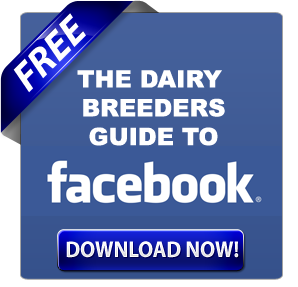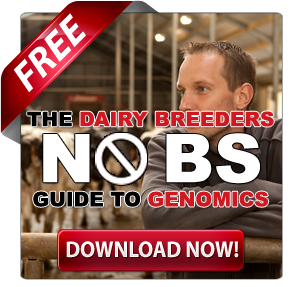Discover hidden profits on your dairy farm and boost annual revenues by €23,764 with systematic hormonal management. Ready for the transformation?
Are you fully tapping into your dairy farm’s profit potential? Could a simple adjustment in your herd management method unlock additional revenue? These questions hold the key for every dairy farmer to take charge of their farm’s profitability and look forward to a more prosperous future.
Reproductive success in dairy cows is not just about increasing the number of calves; it’s a direct path to your dairy farm’s profitability. Enhanced reproductive function leads to shorter calving intervals, better pregnancy rates, and a significant boost in milk production. Studies have proven that improved reproductive management not only increases profitability but also instills hope for a brighter future by raising milk outputs and lowering culling rates.
“The profitability due to improved reproductive performance is mainly associated with higher milk revenues.” – Meadows et al., 2005
In this article, we’ll explore the economic impact of cow-based reproductive management programs that use systematic hormonal treatments compared to those based on veterinary diagnoses during fertility checks. You’ll discover:
- The different hormone-based reproductive protocols available and their benefits.
- A breakdown of how these programs affect milk production, calving rates, and overall profitability.
- Key findings from a comprehensive bio-economic simulation model applied to a typical 200-cow herd.
- Actionable insights for deciding which reproductive management strategy could provide the highest economic return.
Continue reading to learn how to increase income and simplify reproductive control using systematic hormonal therapies.
Ever Wondered How to Supercharge Your Dairy Farm’s Efficiency? Explore Hormonal Management!
Have you ever wondered how dairy producers maintain their cows’ reproductive health and productivity? Hormonal control is not just significant; it’s crucial. Let’s explore this topic and gain a deeper understanding of some typical methods.
First, hormonal management entails controlling and improving dairy cow reproductive efficiency by administering certain hormones. This strategy ensures that cows are bred at the proper time, resulting in constant milk output and farm profitability.
Three popular hormonal therapies are PRIDsynch, Ovsynch, and Double-Ovsynch regimens.
- PRIDsynch Protocol
- During the PRIDsynch regimen, a progesterone-releasing intravaginal device (PRID) is used for about one week. Think of it as a hormonal “restart” button. Following the removal of the device, the cow gets hormone injections to induce ovulation. This allows cows not to display obvious symptoms of being ready to reproduce, ensuring they are inseminated at the appropriate time.
- Ovsynch Protocol
- The Ovsynch protocol is similar to a fine-tuned timetable. To sync all of the cows’ cycles, hormone injections are administered over ten days. In this manner, the farmer knows when each cow is ready for artificial insemination. It’s like setting an alarm for ovulation!
- Double-Ovsynch Protocol
- Double-Ovsynch takes synchronization a step further. It runs the Ovsynch protocol twice, providing even more precise timing for Double-Ovsynch, extending the concept of synchronization. It executes the Ovsynch protocol twice, enabling even more exact timing for insemination. This is especially effective for cows with irregular periods or to improve overall herd fertility.
Here’s how these protocols might work: Imagine Farmer John owns a cow named Bella who isn’t in heat. John utilizes the PRIDsynch protocol to ensure Bella receives the hormonal signals to ovulate. John may use the Ovsynch technique with his herd of 50 cows to ensure they all ovulate simultaneously. If he wants to provide the best possible success percentage, he may even use the Double-Ovsynch protocol.
These measures promote cow health while also increasing farm efficiency and profitability.
So, What Did the Study Find When Comparing Different Reproductive Management Programs? Here’s a Digestible Breakdown for You:
First, describe the standard reproductive management program used in Dutch dairy cows. In this system, cows are inseminated based on estrus detection. If the cow is not in heat, vets provide hormone therapy according to the detected condition—anestrus, cystic ovarian disease (COD), or sub-estrus. Consider the issue solution case-by-case, but only after the identified problems.
Compare this to the three systematic hormone-based programs: FTAI, FTAI+ED, and ED+TAI. These methods use hormone therapy more methodically, depending on certain days in milk (DIM), rather than waiting for a problem to be identified.
- FTAI (Fixed-Time Artificial Insemination): Hormones are administered to all cows commencing at 50 ± 3 DIM, with insemination occurring at 77 ± 3 DIM. Non-pregnant cows are assessed after insemination for the presence of a corpus luteum (CL) and treated accordingly—those with a CL get the Ovsynch procedure, and those without PRIDsynch.
- FTAI+ED (Fixed-Time AI with Estrus Detection): This extends the FTAI technique by detecting estrus in subsequent inseminations. If a cow exhibits estrus, she is inseminated again. If not, she is evaluated and either given further hormone medication or is found to be pregnant.
- ED+TAI (Estrus Detection followed by Timed AI) combines ocular estrus detection and systematic hormone usage. If a cow is not recognized in estrus by a specific point (91 DIM), she goes through a PRIDE protocol.
The research used a sophisticated computer model of a 200-cow dairy herd to compare these treatments objectively. This model included daily reproductive events, hormone administrations, and economic variables. By modeling a year, They assessed each program’s effects on essential indicators like calving intervals, total milk output, and net financial return.
What distinguishes this research is its practical applicability. They used approaches that mirror practical agricultural management practices. Farmers might consider DIM-specific treatments regular maintenance rather than waiting for a machine to break down before correcting it. The contrast demonstrates how proactive, rather than reactive, hormone treatment may improve reproductive efficiency and economic benefits.
The systematic programs—particularly FTAI+ED—provided more significant economic advantages via improved reproductive performance and fewer culls despite higher initial expenses for hormones and monitoring. Intrigued? Consider implementing more systematic hormone usage in your dairy enterprise!
Unlocking New Profit Avenues: Financial Gains from Systematic Hormone-Based Programs
The study shows that implementing systematic hormone-based reproductive control programs can significantly boost a dairy farm’s economic performance. Let’s look at the financial benefits indicated by the report. Increasing Net Economic Return (NER): Compared to conventional approaches, the Fixed-Time Artificial Insemination with Estrus Detection (FTAI+ED) program achieves a net income gain of €23,764 per year. Not far behind, the FTAI program and the combination of Detection of Estrus followed by Timed Artificial Insemination (ED+TAI) generated net revenue increases of €19,550 and €14,314 per year, respectively. This data demonstrates the potential for significant economic advantages from adopting these initiatives, which should be a source of encouragement and excitement for dairy farmers.
“Systematic hormone-based reproductive management programs present economic advantages by reducing culling rates and boosting the production of milk and calves per cow per year” (Wijma et al., 2018).
Cost-Benefit Analysis: While the systematic programs had more significant expenditures because of increased hormone administration, calving, and feed prices, the income from increased milk and calf production greatly surpassed these costs. For example, the FTAI+ED program had an extra yearly price of €8,953. Still, it produced €32,654 in more significant revenues, resulting in a net gain.
“The additional revenues from milk and calves in systematic hormone-based programs substantially outweigh the total costs, making them economically advantageous” ([Santos et al., 2017]).
If you’re thinking about improving your reproductive control plan, the research says it’s well worth the cost. These discoveries might lead to increased profitability and efficiency on your dairy farm.
Turning Theory into Practice: The Real-World Benefits of Hormonal Management on Your Dairy Farm
Implementing these hormone management programs on your dairy farm is not theoretical; it is a practical way to boost output and earnings. Here are some helpful instructions and hints to help you complete the procedure.
First, understand that although the early expenditures for hormone therapies and calving control may be more significant, these efforts will pay off. Systematic hormone programs like Double-Ovsynch or Ovsynch may boost your cows’ reproductive function, resulting in more pregnancies, calves, and increased milk output. Yes, your feed and hormone prices will increase, but so will your milk and calf sales.
Here’s how to get started:
- Assess Your Current Reproductive Management: Recognize your baseline. How frequently do your cows get pregnant? What are your present expenses and revenue? Knowing where you’re starting may help you track your progress correctly.
- Consult with a Veterinarian: A veterinarian can assist you in developing a tailored hormone program based on your herd’s unique requirements. Diagnostic visits will be required to diagnose and treat ovarian dysfunctions properly.
- Calculate the Investment: Hormones are not free. For example, a PRIDsynch protocol might cost roughly €14.55 per unit, but a Double-Ovsynch could require numerous doses. Consider these costs and the added labor expenses associated with administering these hormones when calculating your budget.
- Monitor Your Feed Costs: More pregnant cows equals more significant feed expenditures. Updated feed regimens should guarantee that you maintain pregnant cows’ health while improving overall feed efficiency.
- Regularly Review Economic Returns: Keep track of your milk and calf earnings. Compare the increase in income to the increase in expenditures to ensure the balance is in your favor. Bio-economic models and farm management software are valuable tools in this context.
- Improve Estrus Detection: Use sensors or visual approaches to improve your estrus detection rate. This reduces the number of hormone applications required and ensures optimum timing for insemination.
Balancing these aspects entails more than paying extra hormones or earning more from milk and calves. It requires ongoing monitoring and adjustment depending on the data. Farms that actively manage these areas might improve profitability by lowering needless expenditures and increasing revenues.
Ultimately, the key is customization. Tailor hormonal management programs to your herd’s demands and farm circumstances. Doing so may increase productivity and profitability, making these systematic hormone administrations a sensible investment for your dairy operation.
Navigating Concerns: Clearing Up Common Misconceptions About Hormonal Management
Adopting a hormone-based reproductive control regimen might raise legitimate worries and misunderstandings. Let’s delve into some common fears and clarify them:
- Is Hormone Use Safe for My Cows?
- Absolutely. Hormone protocols such as PRIDsynch, Ovsynch, and Double-Ovsynch have been intensively researched and utilized worldwide for years. They have been proven safe when properly given by experienced personnel. These regimens mirror regular hormonal cycles, reducing suffering for the cows.
- Will Hormone Treatments Hurt My Cows?
- No, hormone therapies do not hurt cows. The treatments include well-tolerated intravaginal devices and injections akin to vaccinations. The objective is to increase reproductive efficiency while inflicting no pain or long-term discomfort on the animal. Proper management and veterinary oversight assure the cows’ well-being.
- Are There Legal and Ethical Issues?
- Many nations, notably the Netherlands and the United States, have laws governing hormone usage and deem it ethical. These restrictions guarantee that hormone delivery is safe for animals and dairy consumers. Always adhere to local norms to ensure compliance and ethical standards.
- Will Hormone Use Affect Milk and Meat Quality?
- Studies have shown that hormones such as the PRIDsynch and Ovsynch regimens have no harmful influence on milk or meat quality. The treated hormones break down fast and do not remain in milk or meat, ensuring consumer safety. Regular monitoring and adherence to withdrawal periods ensure quality [FDA].
- Is It Worth the Cost?
- Indeed, the initial expenditures for hormone therapy may seem onerous, but the economic advantages far surpass these costs. Hormone-based reproductive control systems result in improved milk outputs, increased calf production, and lower culling rates, which increases farm profitability. This research found significant net economic returns when moving from conventional to more systematic hormone usage.
Understanding these facts helps ease everyday worries, helping dairy producers like you to make more educated choices about using hormone-based reproductive control programs. These systems offer increased farm efficiency while also ensuring the health and well-being of your herd.
Ready to Dive into Implementing a Hormone-Based Reproductive Management Program on Your Dairy Farm?
Here’s a step-by-step guide to get you started:
- Selecting the Right Protocols
- Start by evaluating your herd’s specific needs. Are you dealing with anestrus, cystic ovarian disease (COD), or sub-estrus? The default PRIDsynch, Ovsynch, and Double-Ovsynch protocols can be tailored to address these issues effectively. Consult your veterinarian to choose the best protocols that align with your herd’s reproductive challenges and goals.
- Training Your Staff
- Implementing these protocols will require your team to be well-versed in administering hormone treatments. Organize training sessions where your veterinarian or a reproductive specialist can demonstrate the procedures. Ensure that every team member understands the timing, administration methods, and safety measures for hormone treatments.
- Monitoring and Recording Results
- Keep detailed records of each cow’s treatment schedule, reproductive status, and outcomes. Use herd management software to track data seamlessly. Review this data regularly to monitor the program’s effectiveness. Check for improvements in key metrics like calving intervals, pregnancy rates, and overall milk production.
- Consistency is Key
- Consistency in administration and monitoring is crucial. Stick to the schedules without deviation to ensure the highest chance of success. Periodically consult your veterinarian to make any necessary adjustments based on your herd’s performance.
- Review and Adjust
- After a few cycles, assess the program’s overall impact. Are you seeing improvements? What challenges have you encountered? Use this information to refine your approach, focusing on areas with the most significant room for improvement.
By following these steps, you’ll be well on your way to enhancing your dairy farm’s reproductive performance and boosting profitability.
FAQ: Common Questions About Hormone-Based Reproductive Management Programs
What are the benefits of using hormone-based reproductive programs?
Hormone-based reproductive control systems may considerably enhance reproductive performance, resulting in shorter calving intervals, more milk output, and greater profitability for dairy farms.
Is hormone use safe for my cows?
Cow hormone therapies are safe when done carefully and under veterinarian supervision. These therapies are intended to control reproductive cycles and increase total herd fertility without causing damage.
Will hormone treatments hurt my cows?
No, hormone therapies are intended to help your cows by regulating their reproductive cycles. Procedures are easy and given in a manner that reduces tension and pain.
Are there legal and ethical issues?
Hormone usage in dairy production is strictly controlled to protect animal welfare and food safety. Always follow local rules and veterinarian recommendations to ensure ethical standards and legal compliance.
Will hormone use affect milk and meat quality?
When properly implemented and regulated, hormone treatments do not hurt the quality of milk or meat produced by treated cows. Product safety is ensured by regular testing and adherence to withdrawal periods.
Is it worth the cost?
While hormone therapies incur certain costs, the financial benefits of more excellent reproductive performance, increased milk output, and lower culling rates often surpass these costs, resulting in higher profitability.
The Bottom Line
According to the research, comprehensive hormone-based reproductive control programs improve dairy farms’ reproductive performance and overall profitability. Implementing these methods may shorten the calving interval, minimize culling rates, and boost milk and calf production. The higher expenses connected with these initiatives are more than covered by improved revenues, resulting in significant net economic benefits.
So, are you prepared to discover hidden earnings on your dairy farm? Take the first step towards increasing your farm’s earnings now.
Key Takeaways:
- Systematic use of reproductive hormones can enhance dairy farms’ reproductive performance and profitability.
- Integration of hormone-based reproductive management leads to shorter calving intervals and higher milk yields.
- Higher net economic returns observed with systematic programs like FTAI, FTAI+ED, and ED+TAI.
- Annual net revenues can increase by up to €23,764 ($27,000US) compared to default management practices.
- Despite higher costs, additional revenues from systematic hormone use outweigh expenses, making it a valuable investment.
- Improved reproductive performance includes shorter calving to first AI intervals and increased calf production.
Summary:
Integrating hormone-based reproductive management programs in your operation could be a game-changer if you’re a dairy farmer looking to boost your herd’s productivity and profitability. Recent studies have shown that systematic use of reproductive hormones can substantially enhance the reproductive performance of dairy cows, resulting in shorter calving intervals, higher milk yields, and, ultimately, greater financial returns. “Compared with the default reproductive management program, the highest net economic return was observed for systematic hormone-based programs, adding up to €23,764 ($27,000US) more in net revenues yearly.” Source Systematic hormone use leads to improved reproductive performance and calving to first AI intervals, along with higher milk and calf production, positively impacting overall farm profitability. Increased costs are outweighed by additional revenues, making hormone-based programs a viable investment. The study compares these treatments to three systematic hormone-based programs: FTAI, FTAI+ED, and ED+TAI, revealing significant improvements in economic performance.
The Bullvine Daily
Dairy producers often have limited time to stay updated on the latest news in the dairy industry. With the industry changing rapidly, they need to operate their dairy more like an agribusiness. To help dairy producers stay updated, Bullvine Daily was created. The daily ezine provides a summary of the week’s news that pertains most to a dairy farmer. To receive these summaries, dairy producers can join the over 40,000 subscribers who already subscribe and complete the simple form below. They will also be automatically entered into monthly draws for great prizes. The Bullvine Daily helps dairy producers stay informed about the latest events in the industry, helping them operate their dairy more effectively. By not having to read all the latest news sites, dairy producers can stay up-to-date on what they might have missed.












